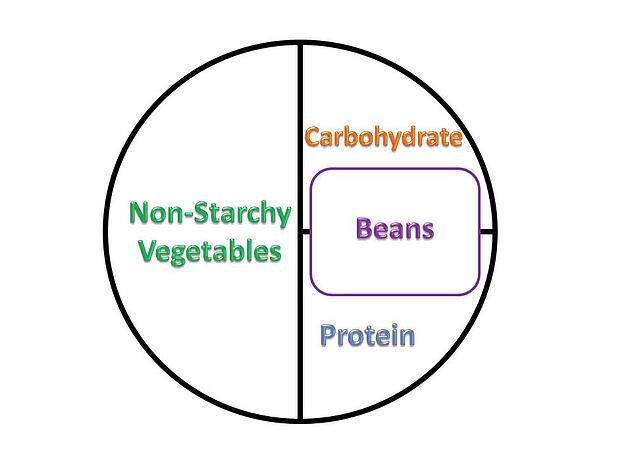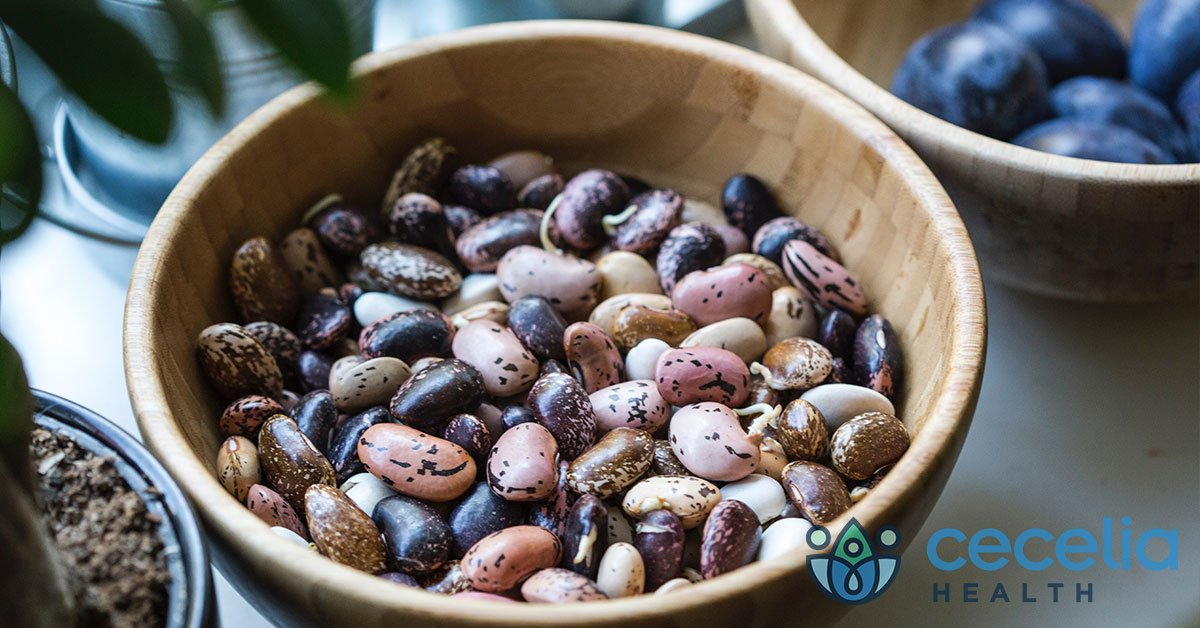Beans, beans, the musical fruit…. You’ve probably heard the silly rhyme. As it turns out, beans are not a fruit or a vegetable. They are legumes, or seeds, from a family of plants that produces seedpods. Legumes include beans, lentils, some types of peas, and peanuts. When we refer to beans in the legume family, we’re talking about all types of beans (kidney, pinto, black, garbanzo, etc.) except the vegetable green bean.
What’s so great about beans? They are cheap and healthy. Many people have tight food budgets in this challenging economy. Beans are inexpensive, shelf-stable, and full of nutrients. With research studies supporting a plant-based diet for healthy diabetes management, beans are a great addition to your meal routine.
Bean Nutrients
While the nutrition facts vary a bit among types of beans, all beans are packed full of nutrients. For example, ½ cup of black beans contains 8 grams of protein, 6 grams of fiber, significant amounts of iron and potassium, and only 1 gram of fat. It also contains 21 grams of carbohydrate. That’s right; beans contain both carbohydrate and protein.
Beans and Diabetes
Since beans have both carbohydrate and protein, where do they fit in a diabetes nutrition plan? Remember that beans are high in fiber. Your body doesn’t digest fiber so not all of the carbohydrate from beans will be turned into blood sugar. Additionally, the protein will slow down the digestion of beans. These factors give beans a low glycemic index, meaning they are unlikely to cause a spike in blood sugar. Several research studies have shown that beans can be helpful in managing diabetes as well as high blood pressure and high cholesterol.
You still need to account for the carbohydrate in beans if you take insulin or are on a carbohydrate-counting plan. If you use the plate method for diabetes, the beans take up space in both the carbohydrate and protein sections.

Cooking Beans
You can buy dried beans and cook them yourself by boiling them in water based on the packaging directions. This allows you to control the amount of salt added to your beans. If you are short on time, canned beans will work just fine. You can remove some of the sodium if you drain and rinse them.
Beans can be eaten cold or hot. Whether you cook them yourself or buy them canned, it is easy to add beans to dishes such as salads, soups, tacos, casseroles, and more. They are also a great finger food for kids. Get some ideas from this Cooking Light article with 21 meals that start with a can of beans: https://www.cookinglight.com/budget-friendly/meal-starter-can-of-beans?slide=312957#312957
Beans and Gas
…. The more you eat, the more you toot. If gassiness prevents you from eating beans, don’t give up yet. Beans are high in fiber and fiber is not digested by our body. If your normal diet doesn’t contain much fiber and occasionally you eat a large amount of beans, or any other food high in fiber, it is going to cause gas. Your digestive tract needs time to adjust. Start with smaller portions of beans and add them to your diet more frequently so your body can get used to the fiber.
A second tip is to drain and rinse canned beans. Not only does this reduce the salt, it also removes some of the carbohydrates from the bean liquid that are likely to cause gas.
Getting Started with Beans
Next time you do your meal planning, consider including beans as a low-cost part of a healthy diet. With so many varieties, you’ll be sure to find one that you like. Use this guide from The Daily Meal to determine which type of bean is the best fit for your favorite recipes: https://www.thedailymeal.com/cook/heres-your-guide-every-type-bean-and-best-recipes-them-0/slide-17
